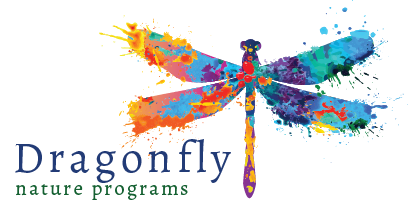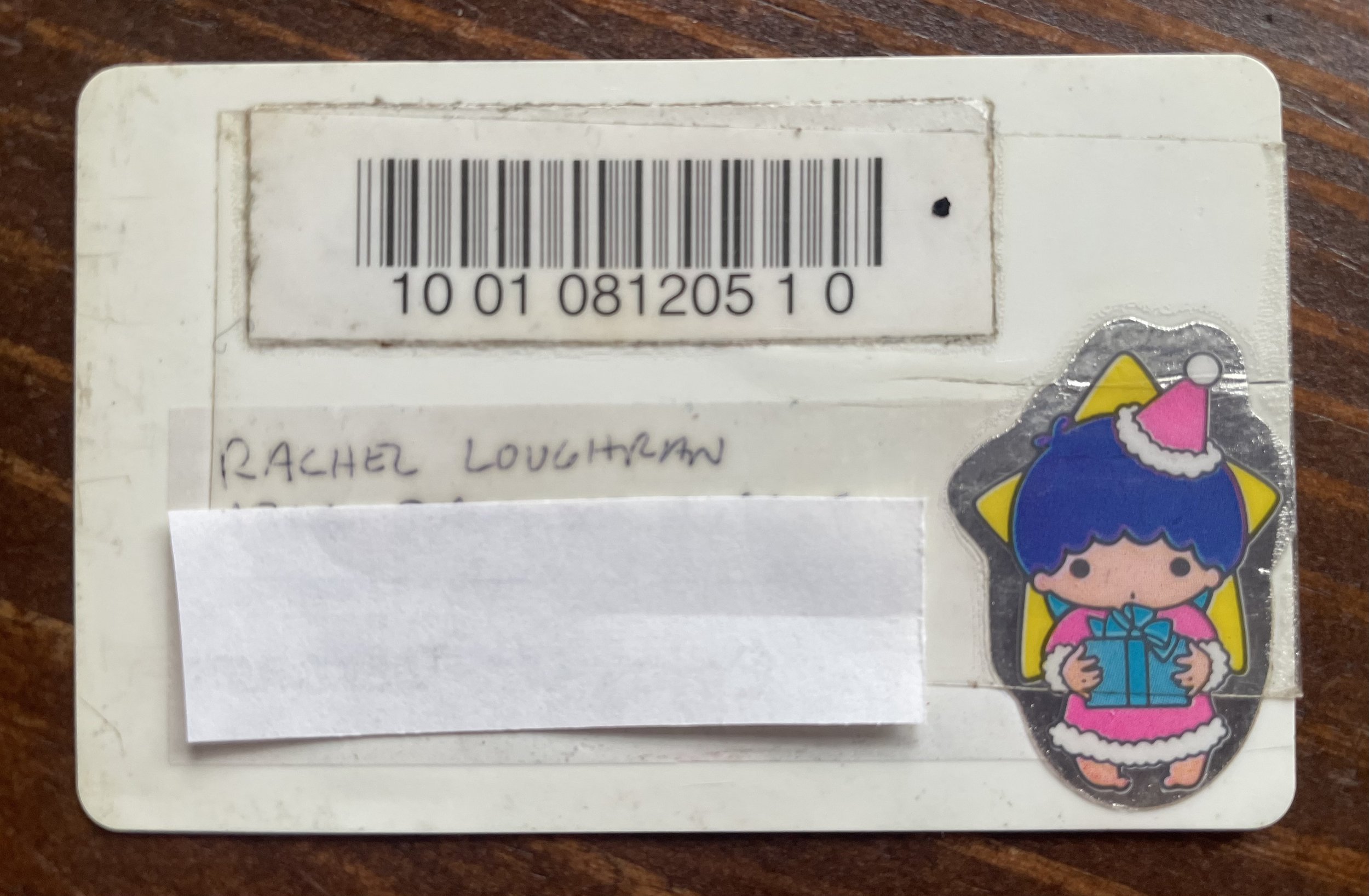“I do believe something very magical can happen when you read a good book.”
My very first library card. A taste of independence.
If you’d like to subscribe to this blog, please fill out the form at the bottom of this page. And I invite you to visit other posts in this series to learn about sustainable classroom practices, more book reviews and lesson ideas for incorporating nature education into your classroom. And I’m always looking for guest bloggers. Reach out if you are interested.
In 2020, at the height of the Covid-19 pandemic and lockdown, I wrote a post entitled, “A Nature Lover’s Bookshelf For Kids”. It was a vetted list of beautiful, nature-themed books worthy of your attention. I was so grateful at the time that our library managed to stay open through that confusing period. I am always so grateful for the library. I still carry, in my wallet, my very first library card. My name and address was hand-written onto the card in my Dad’s handwriting, all caps and purposefully neat. I had a shiny sticker I immediately adhered to the front of the card once it was given to me. I felt really proud to be a card carrying library patron and walked the several miles to my library often as a kid to pick up my next favorite book!
Below is a new list of recommended books from one lifelong avid reader, to you. They were chosen for their positive story lines, beautiful illustrations and scientific accuracy. They each celebrate nature. I wholeheartedly believe that reading broadens our world and is an easy entry point to nature education.
Happy reading, Rachel
“Begin with a Bee” by Liza Ketchum, Jacqueline Briggs Martin and Phyllis Root
Illustrated by Claudia McGehee
This book starts with a simple question: “What’s inside this hole in the ground?” Some of my favorite adventures with kids begin with that basic query. And from there, this colorful book takes you through a year in the life of a rusty-patched bumblebee. In doing so, it paints the existence of an animal with purpose and capability and presents to children an animal worthy of praise rather than fear. The illustrations really stole the show for me and I appreciate the amount of information without too much text on each page, making for a great read aloud book.
“When Daddy Shows Me the Sky” By Rebecca Wenrich Wheeler
Illustrated by Katherine Jordan
This pick is from a local writer and teacher, Rebecca Wheeler. She tells a story about family, nature and mindfulness. The child in the story relates the Greek myths of constellations to matching yoga poses. The book shares accurate information about the planets, moon and constellations of the Northern Hemisphere without it overtaking the overall message of cherished family time. The next book in her collection, “When Mama Grows with Me” will be released this month, September 2023 and is as sweet, thoughtful and loving as this title. It also delicately weaves the body through yoga poses, nature and family life into a cohesive story.
“If You Take Away the Otter” by Susannah Buhrman-Deever
Illustrated by Matthew Trueman
The soft green used throughout the book gives you a feeling of being underwater, immersed in a kelp forest. We don’t often think of forests as living underwater but this story captures the complexity of this incredible ecosystem thoughtfully. And it’s honest enough about our human role in the natural history of otters: “People do not always understand at first the changes they cause when they take too much.” I appreciated that child-friendly admission.
“Mama Dug a Little Den” by Jennifer Ward
Illustrated by Steve Jenkins
Each page of this book is its own stand-alone poem, explaining the many different reasons and locations, an animal would dig a den. I appreciate the rhyme structure and sing-song rhythm of the book and I appreciate the small print with additional information a parent or teacher could choose to read, use in discussion or skip. A wide variety of animals are featured, jumping from habitat to unrelated habitat, but it doesn’t take away from the story.
“Harlem Grown” by Tony Hillery
Illustrated by Jesse Hartland
This is a story of the perseverance of a Harlem citizen who took action to remediate an empty lot across the street from a public school. I loved the part in the story when the young main character Navaeh, realized her plant wasn’t going to live. “We’ll try again,” she was told. I see many would-be gardeners get stuck on the idea that they should have all the answers before they begin. That is not the message of this true story.
“Fletcher and the Falling Leaves” by Julia Rawlinson
Illustrated by Tiphanie Beeke
Fletcher is the embodiment of many children I know; set as a young fox who doesn’t understand the natural cycle of deciduous trees. But his mother is patient with him and allows him to figure things out for himself. I had to read this story more than once to get the proper cadence, but that didn’t keep me from adding it to this list. The idea that trees change with the seasons and that it’s okay and it can be beautiful, is a worthy message to share with children as watching the changes in nature can help us handle the inevitable changes in our own lives too. This book does a good job of relaying the anxiety that change can bring while allowing it to settle and ease as well.
“Fur, Feather, Fin All of Us Are Kin” by Diane Lang
Illustrated by Stephanie Laberis
The colorful and playful illustrations will give children a lot to look at. Ultimately the message of this book is animal sentience and it does a good job of planting humans right smack into the animal world. It’s a message I find some students struggle with: we humans are animals, we are mammals. We are not “other”. I believe it is a message worth sharing as it may just be our othering of nature that makes it so easy for us to drill, bulldoze, dam and pollute our natural spaces, hurting critters that really aren’t so different from us after all.
“Yoshi and the Ocean” by Lindsay Moore
This is the illustrated true story of a loggerhead sea turtle who was found in 1997 by Japanese fishermen. He was injured and relocated to an aquarium where he lived and healed for nearly 20 years before his eventual release. From there, the story got interesting. Before Yoshi was released, he was set-up with a tracker that pings a satellite every time he surfaces, “Hello from Yoshi. I am here.” The last few pages of the book has a terrific map of Yoshi’s journey, a detailed page about loggerhead sea turtles, satellite tracking and even oceanic food webs and the role plastic plays. This book is great for lower elementary children.
“The Sequoia Lives On” by Joanna Cooke
Illustrated by Fiona Hsieh
The California girl in me was drawn to this one. The illustrations do a good job of scaling the tree up in contrast to the people, other plants and animals standing next to them. It touches on all steps in the Sequoia’s life cycle, while relating how the trees are a part of the larger ecosystem. It also does a good job of contrasting the life of this “giant among giants” to the lives of humans: “a mighty sequoia can live more than thirty human lifetimes.” It’s important for children to hear tales where humans aren’t the center of the story.
“Being Frog” & “Feel the Fog” both written by April Pulley Sayre
I’m including both books because they both do a good job of drawing you in. Both are a series of beautiful photographs, described with short sentences or statements. I was especially drawn to “Feel the Fog” because being in fog is so visceral! Nearly every photograph brought me back to a direct memory. As many people these days don’t interact so directly with a frog or experience firsthand the cold dampness of fog, I feel like these books hit the mark of connecting readers to nature.


